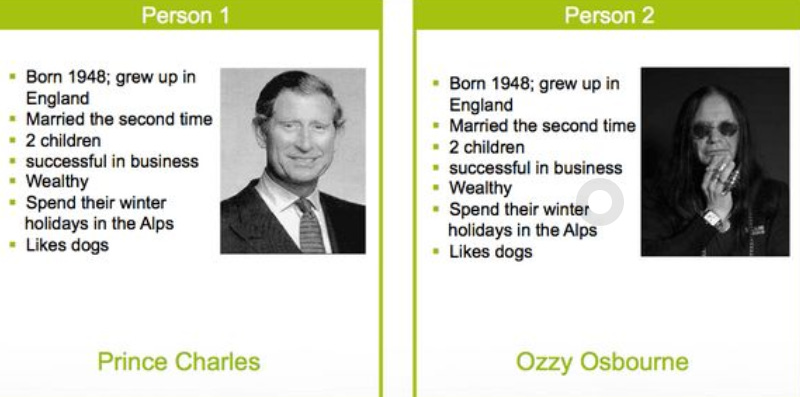Here’s my snarky way of proving that candidate personas are crap:
Have you ever hired a persona?
No. You haven’t.
Okay, now that I’ve gotten my snark all cleared out, let’s get serious.
Personas are a great way to figure out how to talk to a large swath of people. Perhaps you are selling fabric softener and you need to develop a persona to understand who chooses a fabric softener in a household, how they choose it, where they buy it, what questions go through their mind when they make a selection, where they get information about fabric softeners, etc. The goal is to understand someone’s process for buying the product so that the marketer can influence that process, so at that moment of selection, they have a good shot of being selected.
And generally, this is a smart strategy. In this instance, the persona development process might reveal that the person who is primarily responsible for fabric softener selection is a woman between the ages of 25 and 65.
From that wide slice, they decide strategically that they want to target younger audiences or older audiences or more affluent audiences or cost-saving audiences. They bring in demographics and psychometrics and they decide that the best target audience is a woman with ~2 children who drives a car she owns in a house she owns. They know that she watches more Netflix than Hallmark and probably dabbles in grocery delivery and meal prep services in zip codes that lean slightly to the right but not in any obvious or outwardly visible way.
That’s a persona. And with this information, a marketer will make decisions about how to engage this audience to convert the highest percentage of them into becoming interested in and buying their brand. It will inform the brand tone and what messages might resonate best.
That has almost nothing at all to do with how you recruit.
For one, you don’t want an audience, you want a hire. You want someone who can do the job, potentially can get behind the mission of the company, has the potential to grow over time, and generally makes the company better.
Does it matter that they watch more Netflix than Hallmark?
Unlike the fabric softener, you don’t want millions of applications. You want one or two great applicants. And understand who is a great applicant takes a lot of work. That’s why you have interview pools to look at the individual from lots of different angles. That’s why it takes companies 40+ days to hire one person.
For another, most persona exercises do a better job revealing the underlying biases we have with the target audience than anything specifically interesting about them. I was at a conference that asked everyone to break into eight groups. Each group was asked to build a persona of a female project manager and a strategy to reach them. Every single group had a tactic of “post employer brand content in fashion magazines.” Somehow, every group (each of whom has women in it) decided “generic channel read by women” was a great way to target female project managers. The demographic information radically skewed everyone’s sense of the goal.
Thinking in demographics leads to mediocrity. It asks us to think in generalities and not in specifics. For example, here are two people with the exact same demographic profiles:
Huh. I guess I didn’t get all the snark out of my system…
Anywho!
No one in their right mind would confuse these two people, but a persona exercise sees them as equal, as the same target, and as the same potential hires.
So rethink what you’re getting out of your persona process and ask what you’re really trying to learn.
+++++
I’m thinking of putting on a webinar. Vote on the topic!
***This Newsletter Contains No ChatGPT***
###






Won't disagree that many - even most - candidate personas are crap. But you left out one of the most important facets of the persona, i.e., the candidate journey. Plotting how and where the candidate engages with you, and whether those touch points are handled well or poorly, provides valuable insights into what you need to do to improve your relationship with the candidate (aka your Employer Brand). So we begin by profiling the candidate demographically in order to determine when and where they begin the journey and the path(s) taken. And no one persona will suffice. There may be one for college students, another for military personnel, one for each of the major job disciplines for which you hire, geographic/cultural personas (personae?), etc. Fun fact: persona research began as user experience (UX) research for website development. Instead of designing the site for abstract demographic data, if you keep Chris in mind (your target persona) you intuitively know how Chris will react if you choose one navigation scheme over another because you've gotten to know Chris through their persona.